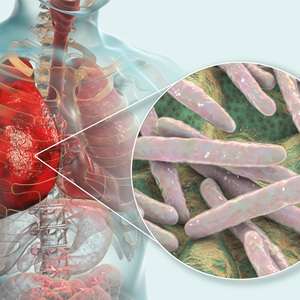
Blog
What are Non-tuberculous Mycobacteria?
October 7, 2021
Non-tuberculous mycobacteria (NTM) are a group of environmental opportunistic pathogens which typically occur in drinking water systems, soils, and dusts. For immunosuppressed, immunocompromised, and other at-risk populations, NTM can cause a variety of infections to those exposed. NTM-caused infections can include those to the lungs, soft tissue, blood, and lymph nodes.
NTM can be transmitted through improperly reprocessed medical devices, direct contact with drinking water, aerosolized water, and even ice machines. NTM has been known to be found in significantly higher quantities in shower heads than the main piping system, making aerosolization risk much higher1. There has also been data to confirm some person-to-person spread of NTM2.
Several species of NTM have become better-known due to increased incidence3. Mycobacterium avium, for example, is responsible for Mycobacterium Avium complex lung and pulmonary disease. Surgical site and lung infections are common sites of M. abscessus infections. M. abscessus is frequently found in cystic fibrosis patients4. Mycobacterium chimaera is a species implicated in several outbreaks from heater coolers devices used in open heart surgery.
Concerns: Antimicrobial Resistance, Treatment & Costs
Globally, the prevalence of NTM is growing rapidly3. According to the literature, in the United States cases rose from 2.8 cases per 100,000 population in the 1980’s to 15.2 per 100,000 population in 20131. Cases can be hard to diagnose and even harder to treat, as NTM can develop antimicrobial resistance1 and is difficult to culture. In some cases, these infections can incubate for five or more years before showing symptoms and, when contracted, can require prolonged treatment with high morbidity.
Further, the costs of these infections tend to be very high for hospitals and healthcare facilities. NTM infections can be almost as costly as a Legionella pneumophila infection, somewhere around $25,985 USD per episode4. The length of patient stays for NTM infections is typically as long or longer than a patient with Legionella pneumophila and evidence supports higher rates of NTM infections when compared to Legionella pneumophila5.
Risk and Prevention
As with many waterborne pathogens, at-risk populations are more likely to acquire a NTM infection. Waterborne NTM in plumbing systems readily form biofilms and have multilayer outer membranes which are thicker than many other bacteria. This membrane helps make NTM especially resistant to chemicals and temperature6. Further, NTM require specific conditions to be cultured in a laboratory to confirm their presence.
Understanding NTM’s unique challenges can help us build a more robust water safety and management plan. It may be necessary to incorporate different or additional control measures in your plan to account for this pathogen.
For additional information, please visit: go.pall.com/ntm
References
Thank you
Thank you for your interest. We will be in touch soon.

Marissa Khoukaz - Business Development Manager— Hospital Water
- Medical Industries
- Author
- Sort By












